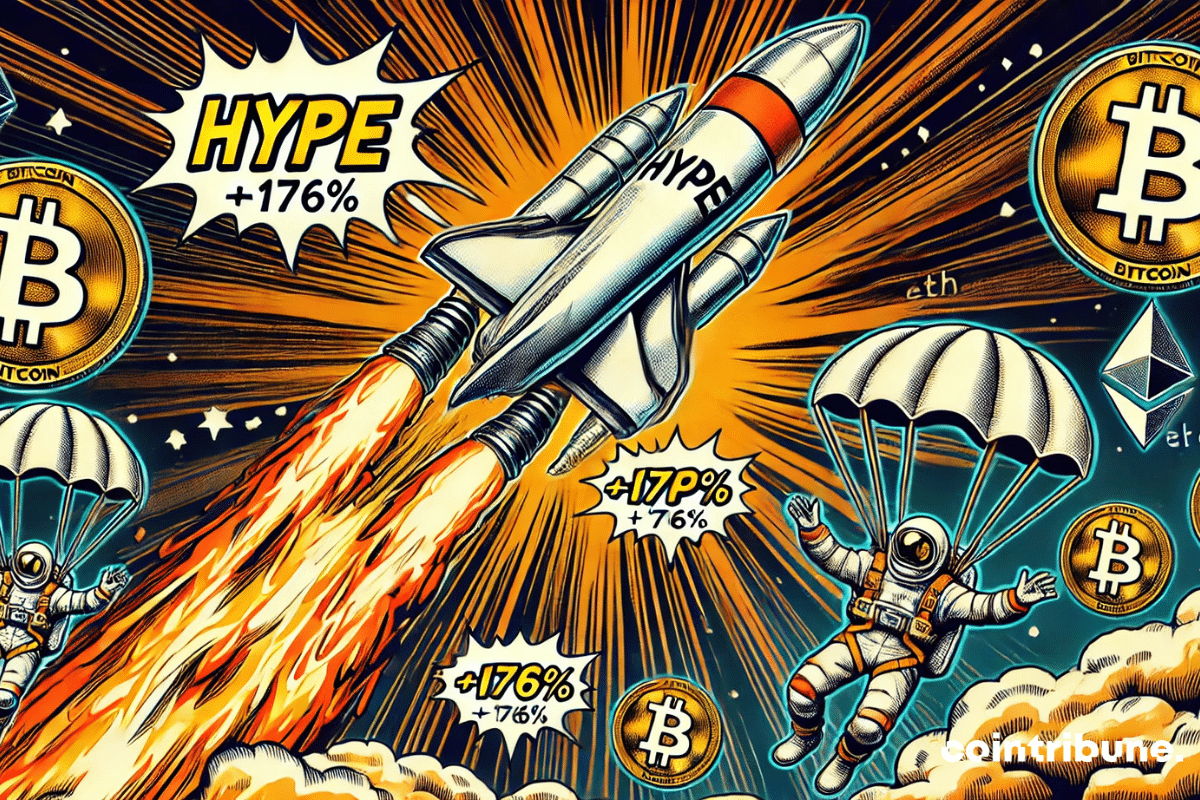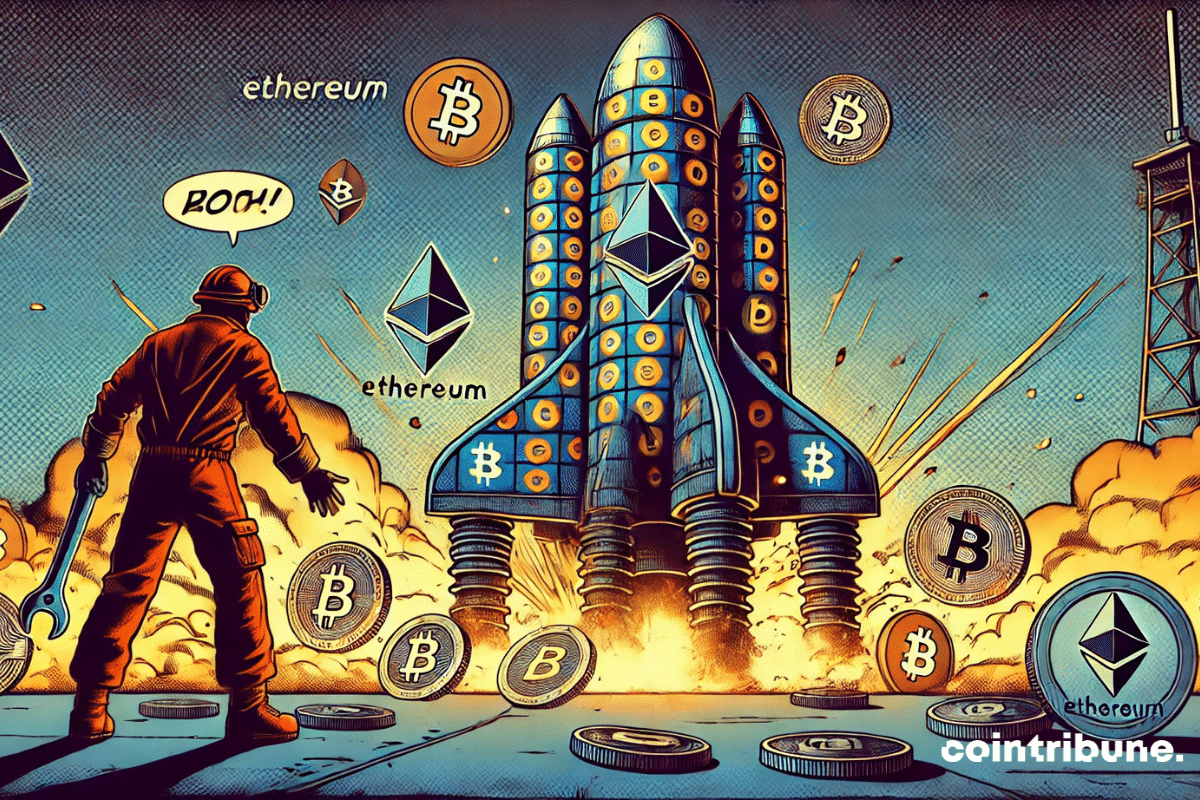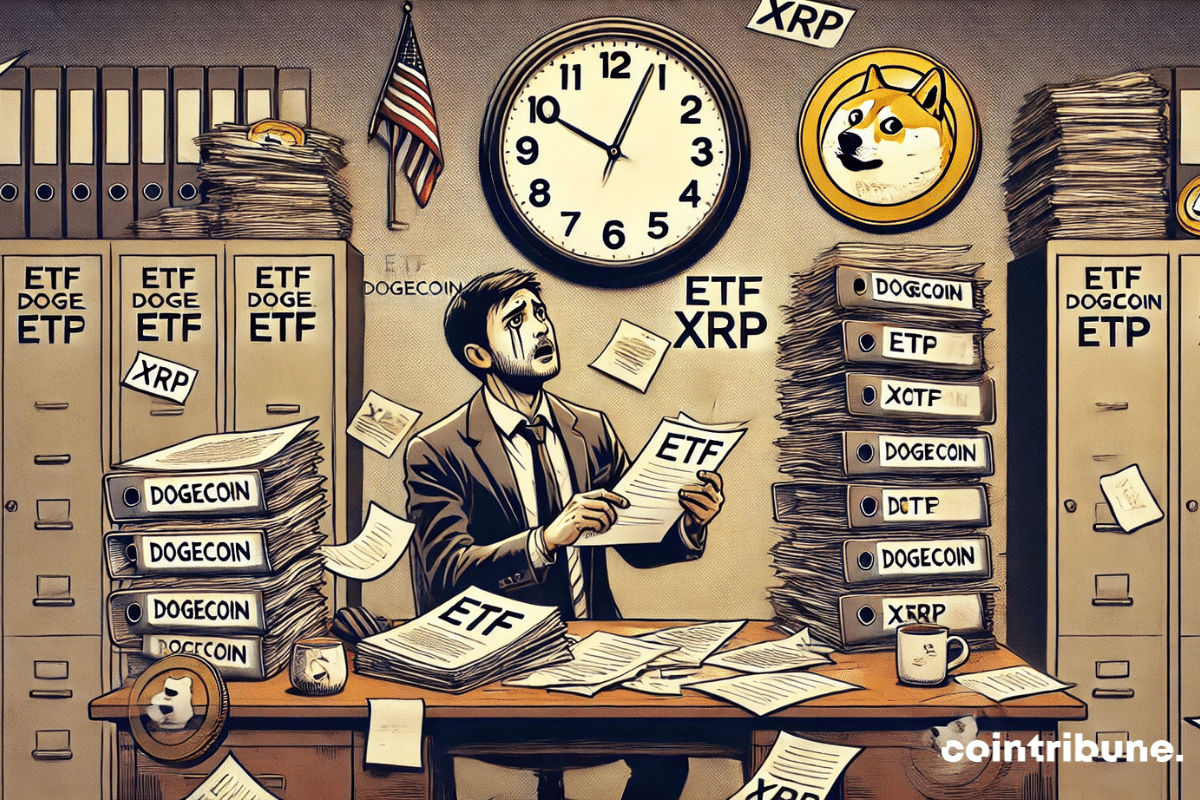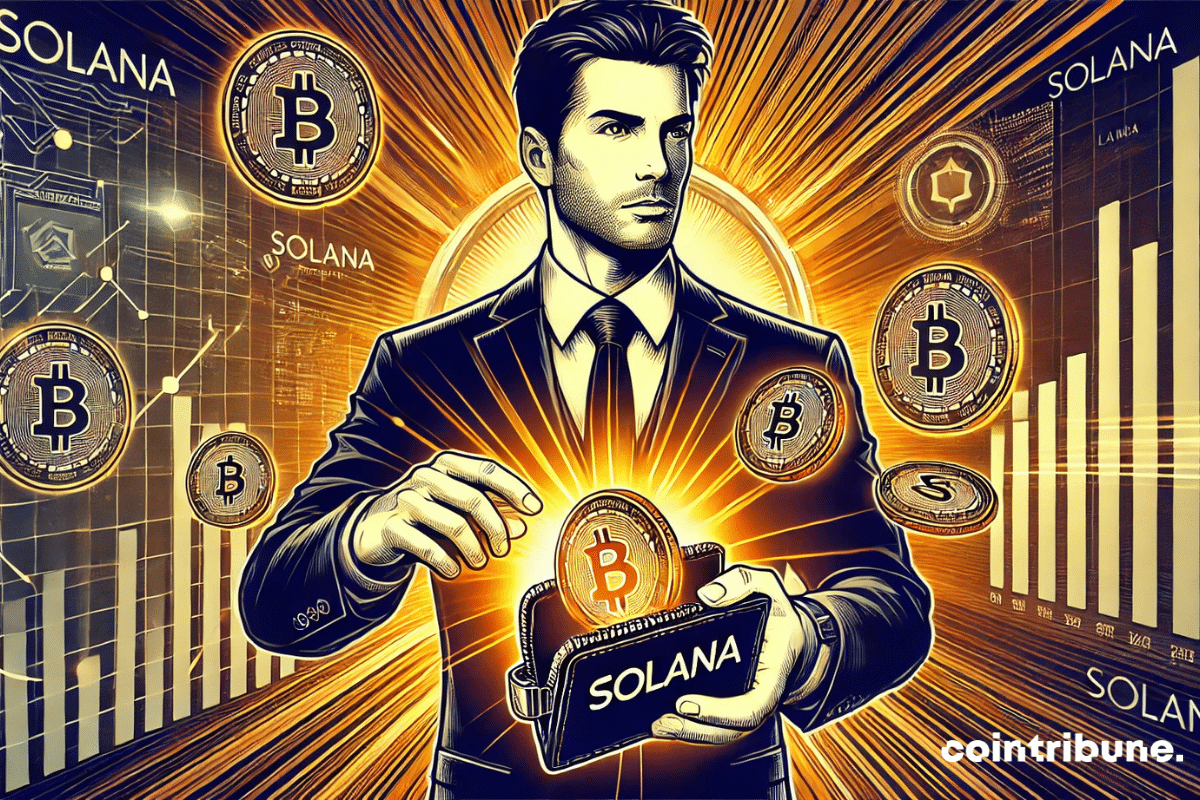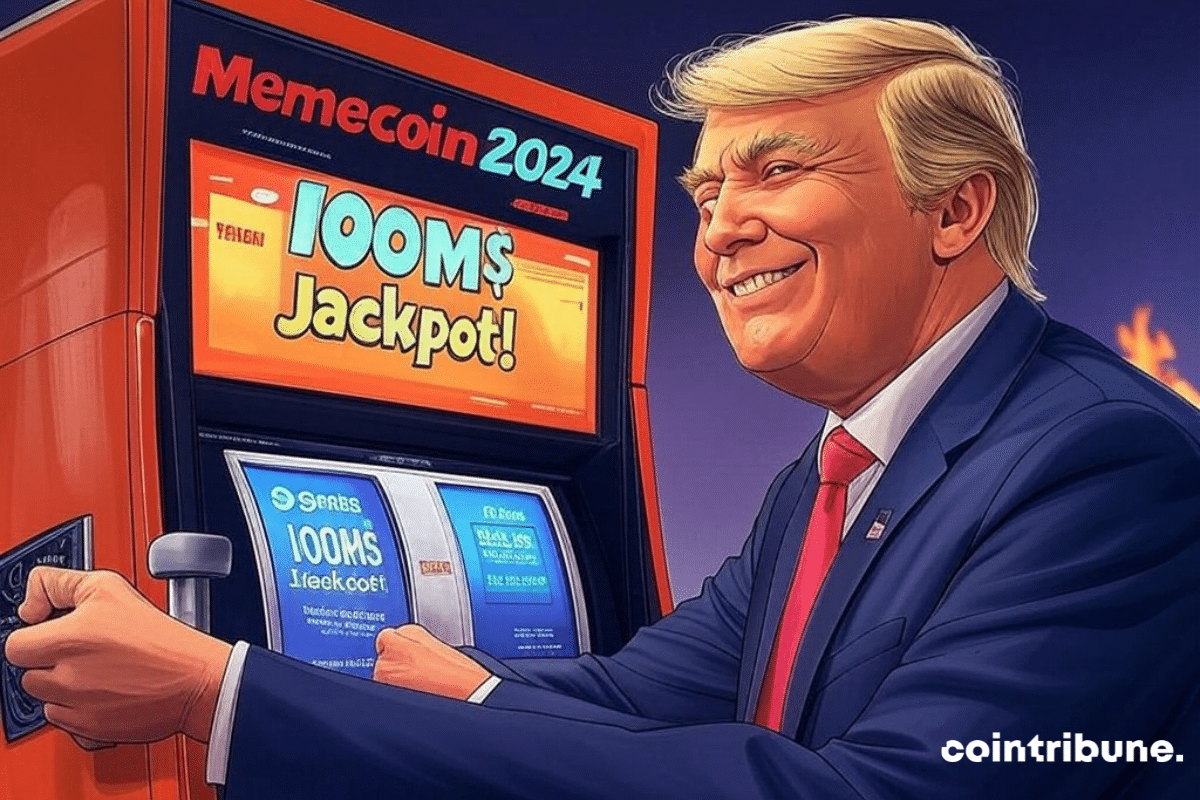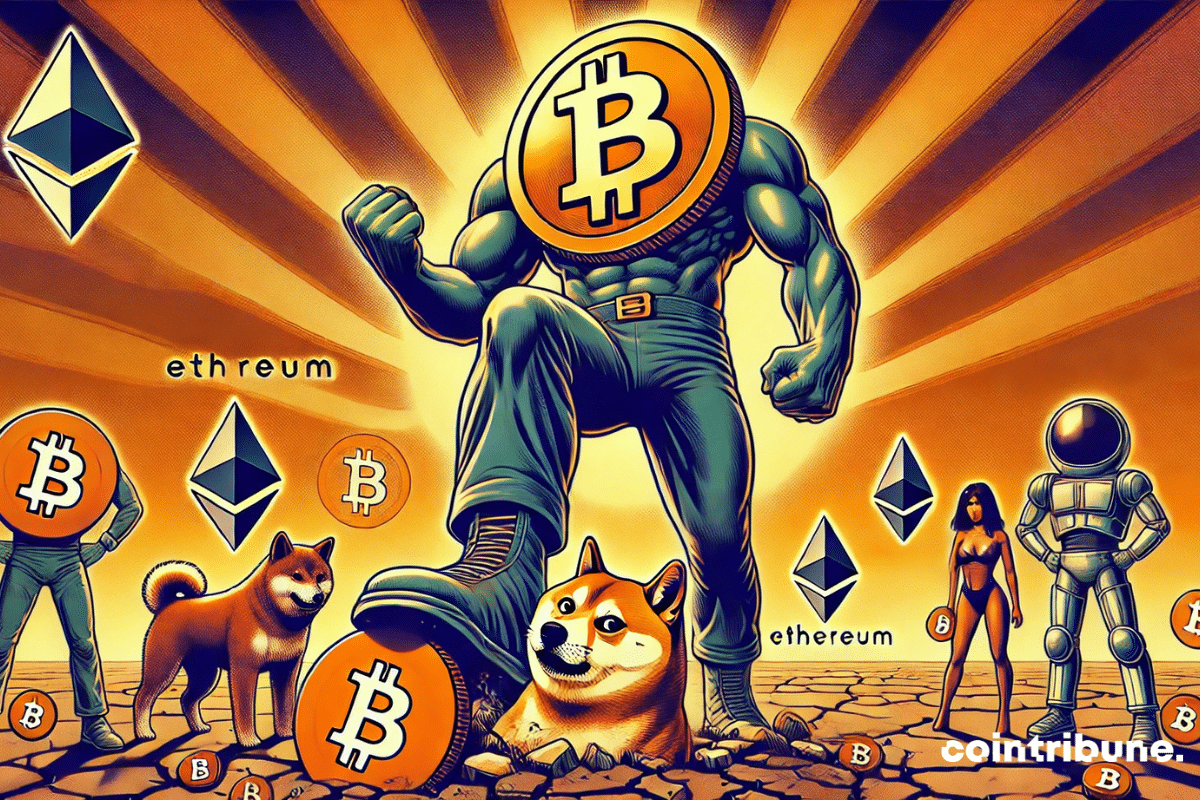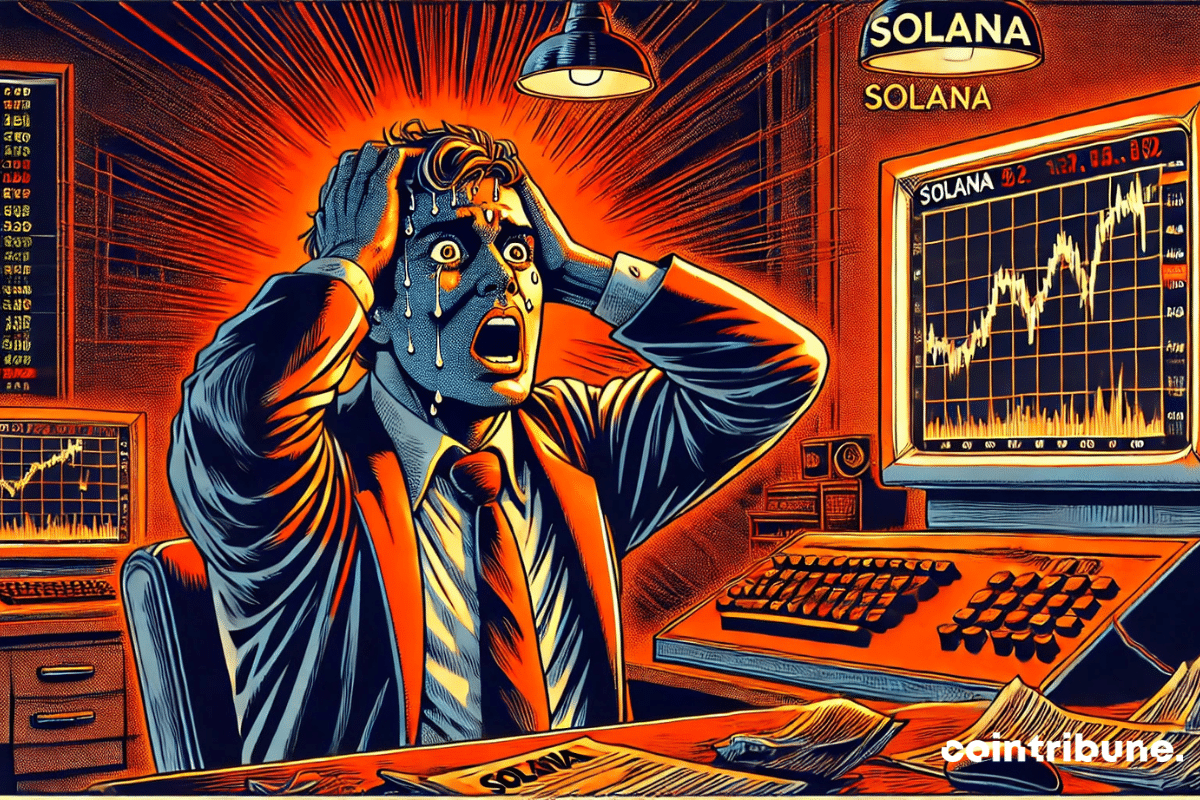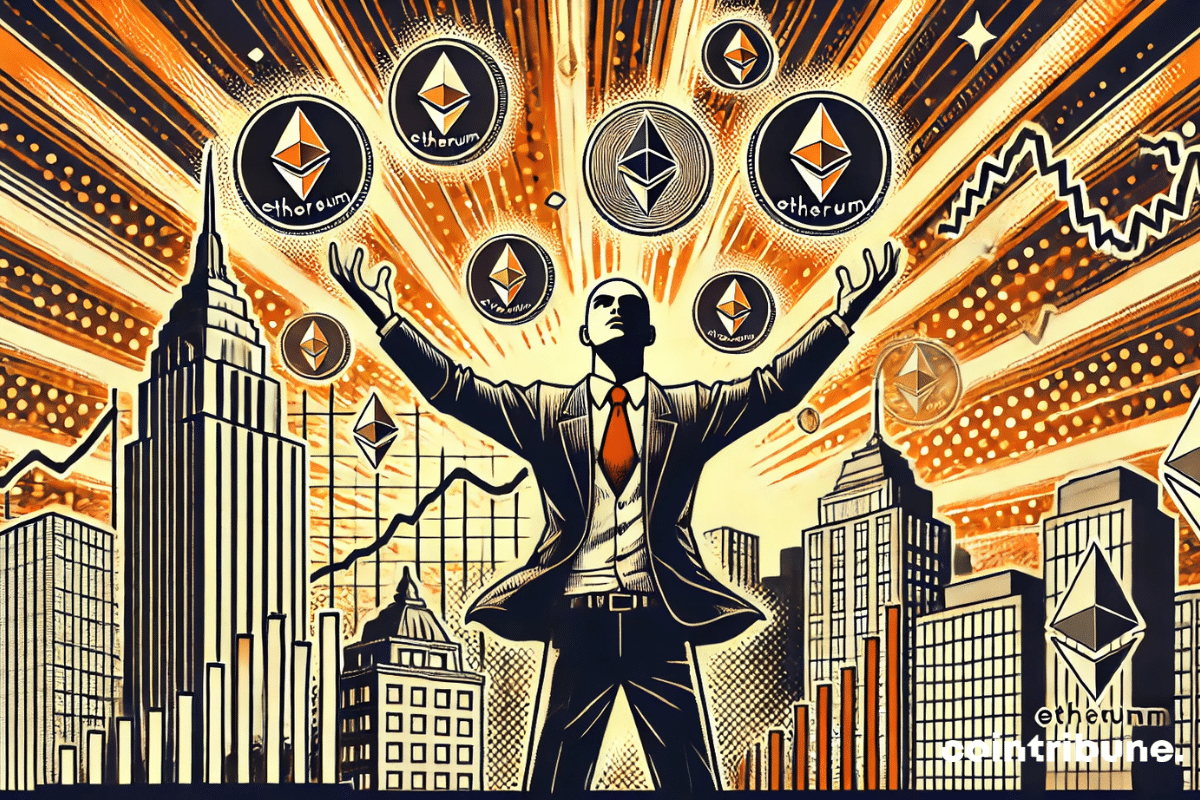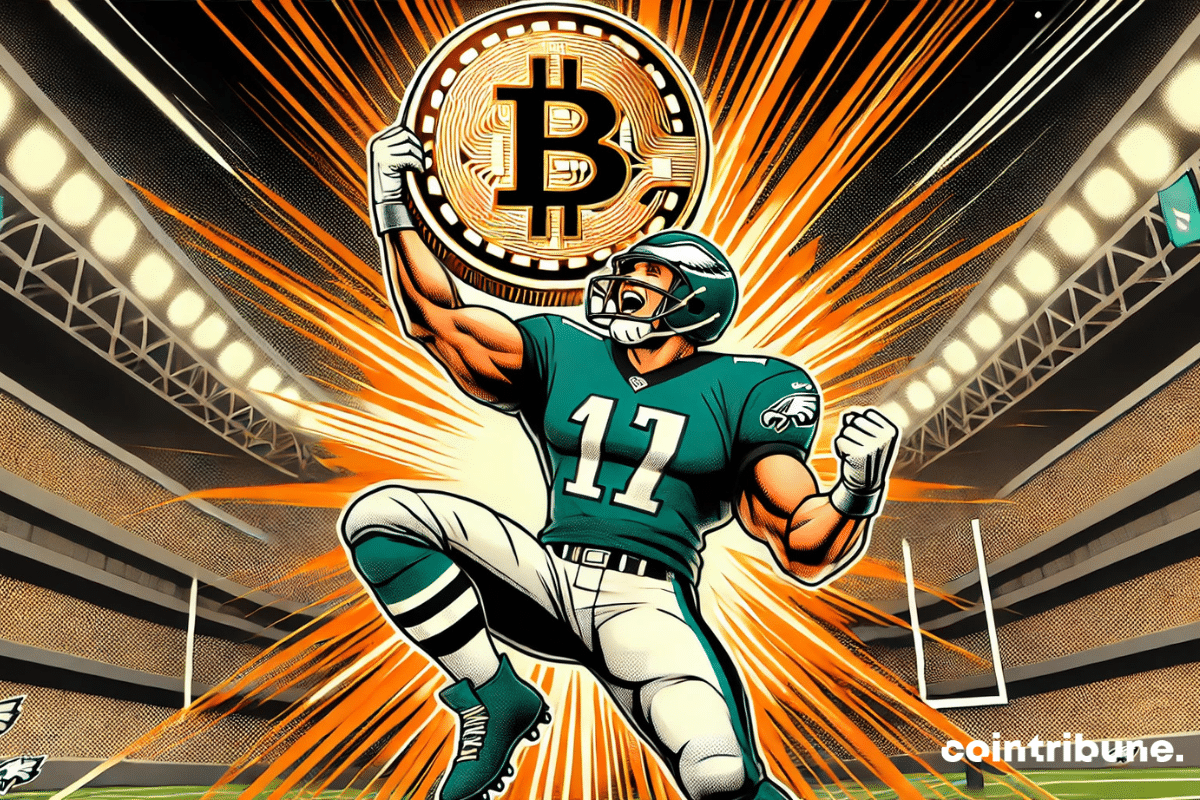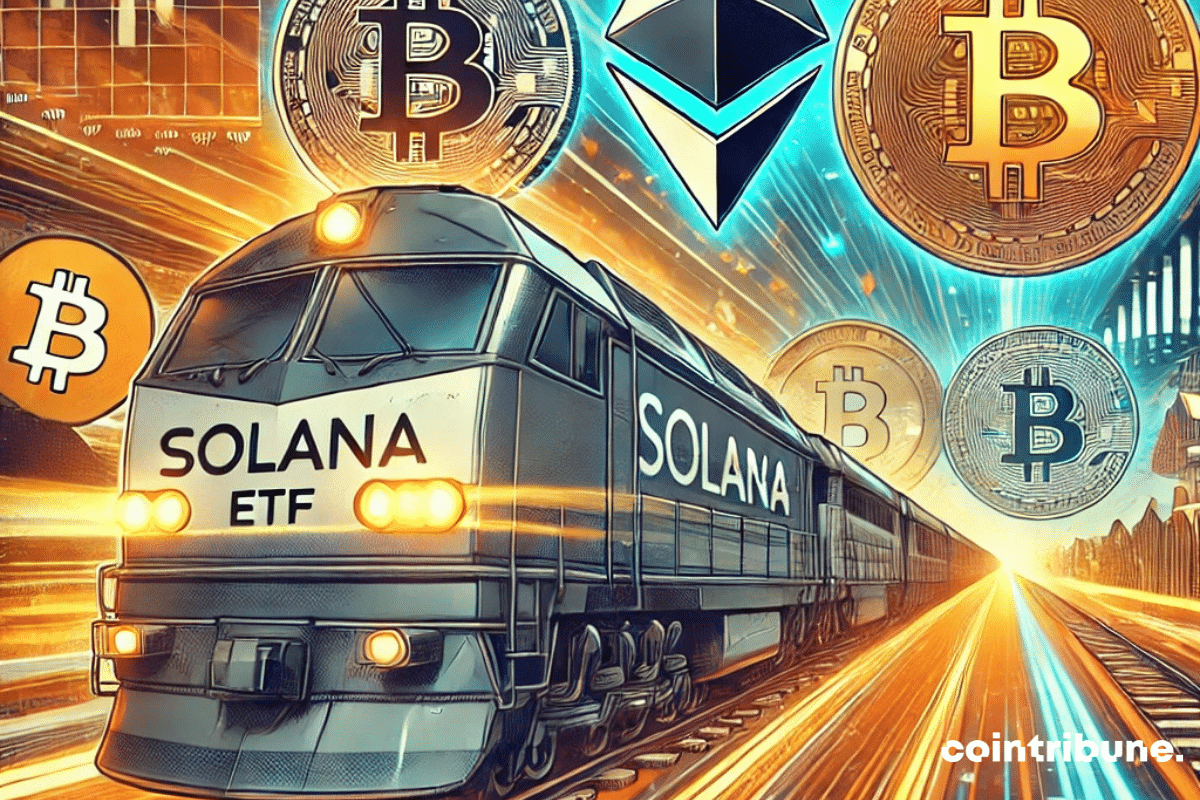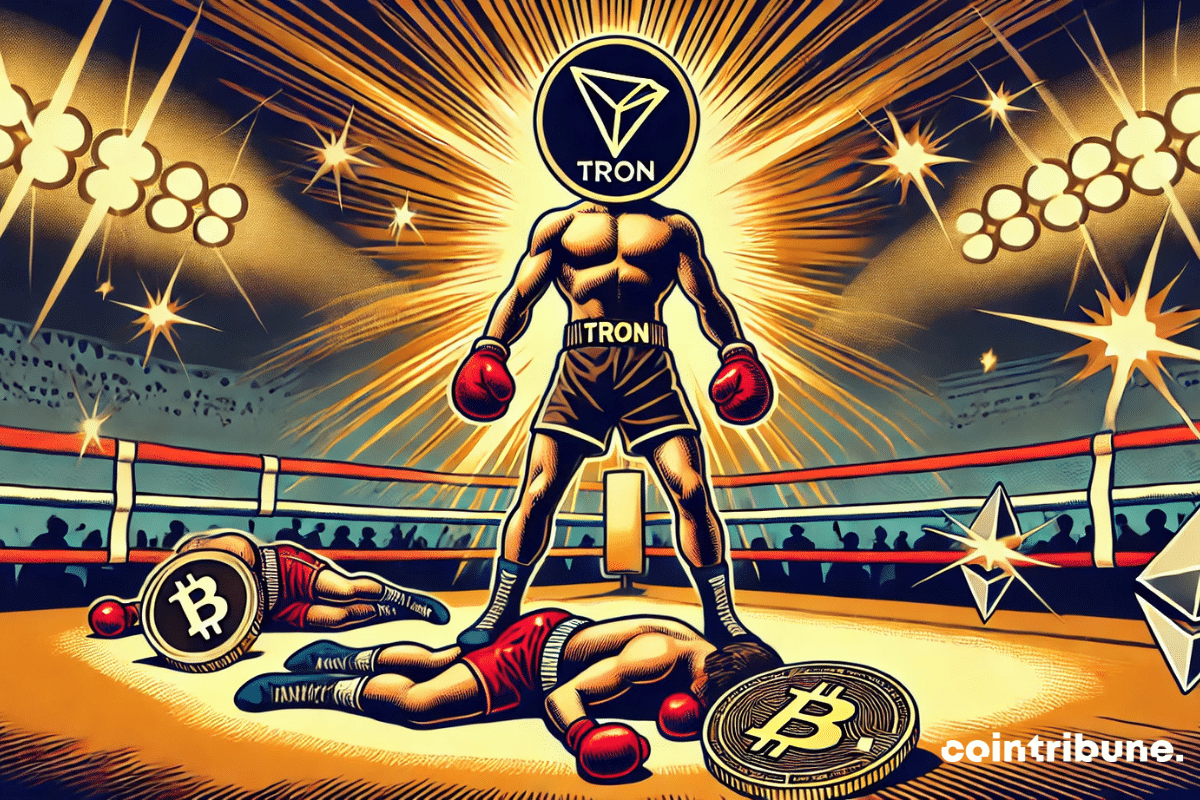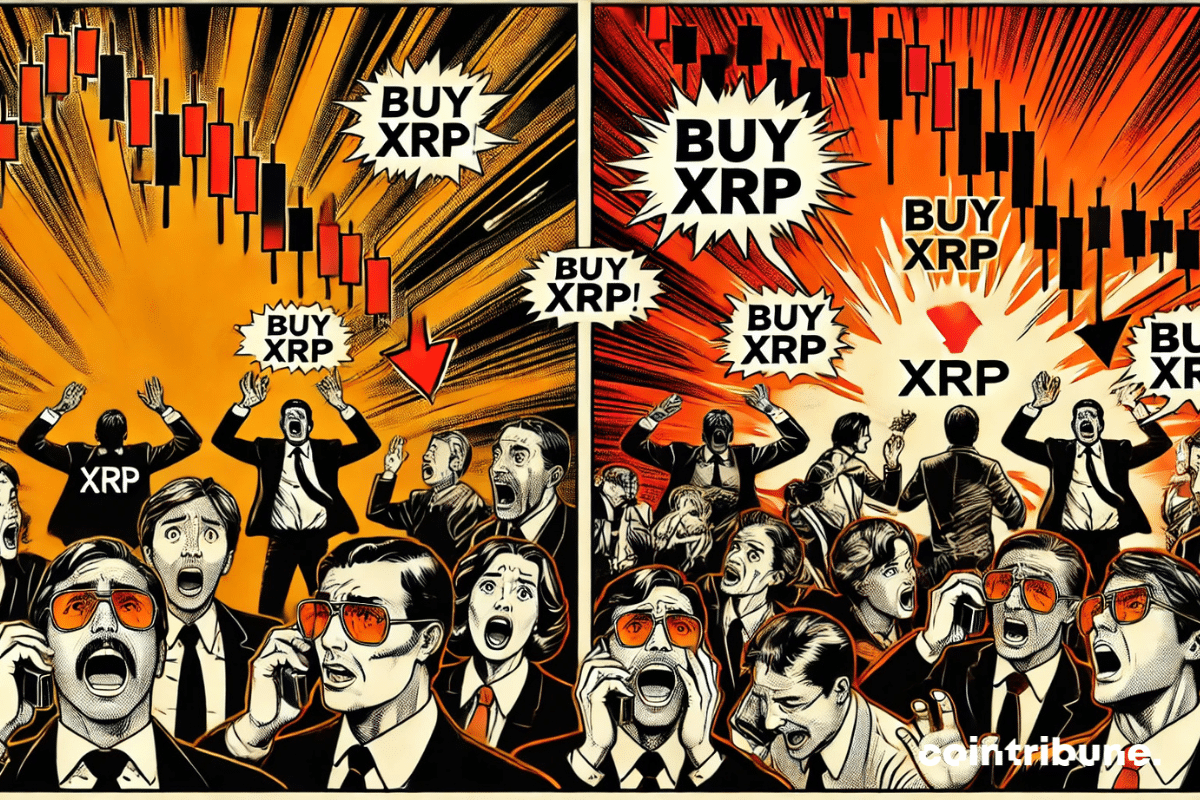190 dollars yesterday, 340 tomorrow? Solana sows doubt and excitement. A double bottom as a springboard, an accelerating adoption: the markets resonate, history is being written.
Theme Altcoins
Transaction fees on the Ethereum network have dropped by 70%, from $23 million to $7.5 million per day. This dramatic decrease comes amid a major transformation for the blockchain, with the announcement of two significant updates scheduled for April 2025.
The crypto market experienced an unprecedented surge in new token issuances in January 2025, raising concerns about liquidity fragmentation and its impact on altseason. According to recent data, over 600,000 new tokens were created during the month, twelve times more than the same period in 2024.
Hyperliquid ignores the chaos and offers a staggering +176%. The HYPE, it’s him. Bitcoin and Ether? Just side characters in this financial soap opera.
The story of Ripple (XRP) is one of a regulatory battle that has kept the entire crypto industry on edge. After years of tug-of-war with the Securities and Exchange Commission (SEC), an unexpected change has just shaken the market: the U.S. regulator has officially acknowledged the requests for XRP and Dogecoin ETFs filed by Grayscale. Is this just an administrative procedure? Perhaps, but for investors, this signal was enough to propel the price of XRP by 20% in just a few days, with open interest now flirting with 4 billion dollars. Behind this surge, the entire future of altcoin ETFs is at stake, and traders are closely monitoring the upcoming decisions from regulators.
The crypto sector is used to forecasts and bets on the future. But when a probability rises to 81%, it stops being mere speculation and becomes a credible scenario. This is the case with the XRP ETF, whose approval in the year 2025 seems increasingly plausible, according to the bets recorded on Polymarket. While American regulators are still struggling to clarify their position on cryptocurrencies, this sudden rise in forecasts is noteworthy.
The altcoin market is experiencing an unusual situation at the beginning of 2025. While some tokens are showing price increases, the marked absence of retail investors is hindering the emergence of a true altcoin season, according to several industry analysts.
The SEC, once inflexible, is making a turn towards crypto: Dogecoin and XRP are entering the fray, and time is working against the regulator, stuck in a tight schedule until October.
The dynamics of power are evolving at a breakneck speed in the crypto sphere. Today, it is BNB (Binance Coin) that is making headlines by surpassing Solana (SOL) in terms of market capitalization. With a 13% increase in a week, BNB has reached a market cap of over 104 billion dollars, thus dethroning SOL. However, this performance goes beyond mere numbers. It is part of a broader context marked by technological advancements, bold marketing strategies, and a shift in investor perception. Let's dive into the details of this remarkable rise.
The line between traditional finance and the world of crypto continues to blur. Franklin Templeton, a giant in asset management with $1.6 trillion under management, takes another step towards integrating blockchain and announces the extension of its tokenized US money market fund (FOBXX) on Solana. This strategic move, which comes against a backdrop of rising tokenized financial assets, could represent a turning point in the institutional adoption of this technology. After already launching this fund on Ethereum, Avalanche, and several layer 2 blockchains, the American company is now betting on Solana, an infrastructure that has managed to appeal beyond its initial reputation as a playground for memecoins.
813,000 washed-out investors, a memecoin that evaporates, 100 million in the pockets of insiders. The SEC looks the other way, Trump smiles: welcome to the Wild West of crypto!
Uniswap takes a major new step with the launch of Unichain, its Layer 2 blockchain on Ethereum. This announcement comes just a few days after the successful deployment of its version 4 on twelve major networks.
The crypto ecosystem is constantly evolving, marked by cycles of euphoria and correction. In recent months, the excitement for memecoins, these highly speculative assets, seemed to indicate a new wave of transient exuberance. However, a shift is occurring: Bitcoin and layer 1 blockchains are gradually taking center stage again, a phenomenon that could mark a decisive turn for the market. Investors appear to be turning away from risky bets in favor of more robust and functional assets, a shift that is not insignificant. According to Santiment, traders' attention is now focusing on fundamental cryptos, to the detriment of ultra-speculative assets. This reorientation could reflect a collective awareness.
Like rats leaving a sinking ship, 605 million dollars in ETH are making their escape. Should we see this as an imminent rebound or a planned shipwreck?
The crypto market wavers under the weight of cautious statements from Jerome Powell, chairman of the Federal Reserve. While investors were hoping for encouraging signals, Powell reaffirmed a strict stance on interest rates, plunging Bitcoin and altcoins into a bearish spiral. A wave of liquidations follows, revealing increased nervousness in the face of macroeconomic uncertainties.
Solana wobbles, stumbles, falls below $200. Its volumes evaporate (-28%), its future oscillates between shipwreck and ETF miracle. The crypto market holds its breath.
Ethereum is at the center of unprecedented selling pressure. While Bitcoin continues to deliver strong performances, the second-largest cryptocurrency is struggling to regain its shine. A critical signal for investors? Since November 2024, short positions on Ethereum have skyrocketed by 500%, a level never reached before. Hedge funds, these seasoned institutional investors, are heavily betting on a collapse in ETH prices, further intensifying market volatility. If the extreme pessimism in the markets were to reverse, a brutal short squeeze could trigger a rapid price surge.
Solana-based applications are now significantly outpacing Ethereum by generating revenues ten times higher, according to cryptocurrency researcher Aylo. This performance occurs despite a bear market context and a slowdown in transactions.
Bitcoin, long the absolute master, looks helpless as Ethereum steals the spotlight: 793 million injected against 407 million, a Trafalgar blow to the ETP market.
In a world where finance and politics are increasingly intertwined, the launch of the memecoin Trump by Donald Trump and his sons has caused shockwaves in the markets. What could have been a crypto branding operation has turned into a brutal game of musical chairs, where early players pocketed hundreds of millions of dollars, leaving behind a tide of disappointed losers. In just a few hours, savvy traders multiplied their bets exponentially and benefited from a speculative surge that drove the token price to $75 before it collapsed. While the phenomenon of memecoins is nothing new, Donald Trump's direct involvement raises questions about ethics, regulation, and the future of political cryptocurrencies.
In a constantly evolving crypto market, altcoins are often presented as innovative alternatives to Bitcoin and Ethereum. However, according to Alon Cohen, co-founder of Pump.fun, the majority of them serve only one purpose: to be memecoins. He argues that the cryptocurrency market is flooded with projects that, while claiming to bring innovations or technical solutions, do not actually have any significant differentiation from memecoins.
The evolution of the crypto market often relies on subtle signals that only savvy investors know how to interpret. Among these, the inflows to accumulation addresses are closely monitored, as they help anticipate bullish trends. On February 7th, these addresses recorded a record influx of $883 million in Ethereum (ETH), an event that, historically, precedes major price increases. As competition among blockchains intensifies and the regulatory framework evolves, this massive accumulation of ETH raises a crucial question: Is Ethereum preparing for a new peak at $4,000 and beyond?
The decentralized betting platform Polymarket recorded an impressive volume of $1.1 billion in bets on the Super Bowl, despite a tense regulatory context. The Philadelphia Eagles triumphed over the Kansas City Chiefs in a match that captivated both sports fans and crypto bettors.
The Shiba Inu is playing hide and seek with traders: a dizzying drop, a rebound in sight, and whales gorging themselves in the background. Ready for the roller coaster?
While Bitcoin and Ethereum have paved the way for ETFs, it is now Solana that is set to write a new chapter. The SEC has just ignited an unexpected fuse: the agency has started the countdown for the approval of a Solana ETF. A decision that reeks of gunpowder, as it contrasts sharply with its hostile past. But behind this turnaround lie issues far deeper than just a simple regulatory green light.
The crypto industry is going through an unprecedented phase of proliferation. With nearly 11 million tokens listed on CoinMarketCap, the market is facing dynamics that could redefine its equilibrium. This rapid expansion raises essential questions: Are we witnessing market saturation or a natural evolution of the crypto ecosystem? Between speculative enthusiasm and growing concerns about the viability of this multiplication of assets, the year 2025 marks a decisive turning point.
Tron, the outsider no one expected, overshadowed Bitcoin in 2024, riding a tsunami of stablecoins and memecoins, turning the blockchain into a true transaction fair.
The crypto market continues to face regulatory uncertainties in the United States. While institutional investors were hoping for a major breakthrough with the introduction of Ethereum ETF options, the Securities and Exchange Commission (SEC) has once again postponed its decision. This choice underscores the caution of the financial authority, despite the precedent set by Bitcoin ETF options, which are already in place. Behind this delay lies a whole segment of the crypto finance that remains suspended under still vague regulations, caught between growth potential and increased control by authorities.
The Ethereum derivatives markets have just recorded their largest outflow of ETH since August 2023, with over 300,000 ETH withdrawn from exchanges on February 6, 2025. This massive movement, amounting to approximately $817.2 million, comes amid increased market volatility.
The crypto market has always been marked by periods of extreme volatility, where panic and opportunities intersect in an instant. Indeed, the recent crash on February 3rd once again illustrated this reality. While XRP plummeted sharply to $1.78, some investors, far from succumbing to panic, seized the opportunity to massively bolster their positions. Among them, Korean traders played a key role. They bought large volumes, allowing XRP to rebound above $2 in record time. But, is this sudden influx of liquidity a sustainable bullish signal or just a temporary reaction from Asian markets?



